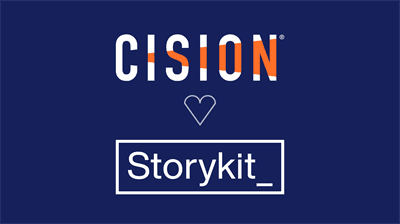Lundin Gold Fell Heavily on the Stock Exchange
The State of the Construction and Real Estate Industry – Glimmers of Hope
Updated: August 11, 2025, 16:55 Published: August 11, 2025, 16:25
How are the construction and real estate industries faring after several tough years? Björn Rundström, editor-in-chief of Byggindustrin and Fastighetsnytt, provides his analysis heading into the fall.
High interest rates, weak demand, and small margins. The construction and real estate industries have faced a challenging year so far, but the picture is very mixed.
“The situation is still relatively strained for both industries. Especially for construction, which is experiencing significant cyclical pressures and struggling to achieve profitability in residential construction,” says Björn Rundström, adding:
“At the same time, there are glimmers of hope.”
What is doing well in the construction industry right now?
“There are parts that are thriving. For example, there is a lot happening in infrastructure and public construction. The Stockholm subway, Ostlänken, and Västlänken in Gothenburg are large projects that are keeping the construction sector going. There is also increased demand from the defense sector and the police, who need more and larger premises.”
What does it look like in the real estate sector?
“The market for rental apartments was the winner in the spring, although there are quite a few vacancies, especially in new construction, while condominiums are struggling. Offices are also difficult to rent out in some places, for example, in Kista. Hybrid work means that people want different types of premises than those that are already built. At the same time, offices in Stockholm’s inner city are in demand, where vacancies are lower and rents are higher. E-commerce continues to make it difficult for physical stores to make ends meet in some places. However, it is going very well in other areas, for example, in the low-price segment. As usual, warehousing and logistics are doing best of all.”
What has surprised you the most this year?
“Possibly that the economy as a whole is still sluggish. I thought we would have seen a clearer turnaround by now. Then, of course, the bankruptcy of one of the country’s larger construction companies at the beginning of the year was a major event – and we have had continued high bankruptcy pressure within construction, while the construction giants are delivering strong profits.”
What should you keep an eye on this fall?
“Within the construction industry, it is important to follow whether there is economic viability in the construction projects that are starting, and to keep track of the bankruptcy situation. When it comes to the real estate industry, the transaction market is interesting; it has shown signs of recovery, and the question is whether it will last. For both sectors, it is largely about the capital market and whether interest rates will come down. A good economic climate is an anchor for the entire industry.”
Are there any innovations to keep an eye on?
“Yes, absolutely. There is a lot happening in automation – everything from AI-controlled asphalt pavers to robot dogs that measure construction sites. Given the new EU requirements, the real estate industry will have an even greater focus on energy efficiency. There are many energetic startups in proptech that are working to find energy thieves in the built environment.”
What are your thoughts on the mission of Fastighetsnytt and Byggindustrin when the market looks the way it does?
“We try to be the industry’s best friend, but never ingratiating. We tell it like it is, which is especially important when commissioned journalism and companies’ own content creation are growing so rapidly. In a recession, the need for independent journalism is greater than ever.”
Want to stay fully informed about your industry?
With the Di +Pro tool, you get a unique mix of environmental monitoring and in-depth analysis from Dagens industri and 16 industry titles. Smart AI functions deliver quick insights and time-saving news summaries – and everything is tailored to your needs.
Di +Pro is a premium tool for individual employees or entire organizations that want to stay one step ahead by optimizing their news gathering and industry monitoring.
Benefits of Di +Pro:
- Unique overview and in-depth analysis
- Competence boost in your subjects
- Less noise
- Time saving
Get up-to-the-minute news, analysis, and market data from Di and 16 industry titles all in one place.
Stay up-to-date in your areas and get the knowledge and insights that make a difference in your professional role every day.
Get a calmer reading experience, more relevant insights, and industry-specific monitoring with less scrolling and more quality journalism in every screen view.
Find answers and in-depth analysis and prepare for meetings faster, and focus on acting on the insights instead of collecting them.
The article is produced by Brand Studio in collaboration with Di Plus Pro and is not an article by Dagens industri
Enjoyed this post by Thibault Helle? Subscribe for more insights and updates straight from the source.







